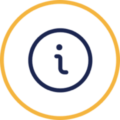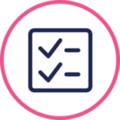An Overview of the Australian Curriculum
A country’s national curriculum is the document that best reflects the values of its people in a specific time. Looking back across past curriculum documents, it’s clear to see the impact of such innovations as digital technologies or improved understanding of neurological diversity on education. The recently updated Australian curriculum speaks to current national priorities, setting revised expectations for what all students should learn, regardless of their background or where they live.
Extensively reviewed in 2020/2021 and compared with a range of curricula from high performing countries, it was endorsed by the education ministers in April 2022. The curriculum was digitised for the first time, making it more manageable for teachers to explore the learning areas and to clearly identify the essential content Australian students should learn.
A bird’s eye view of the Australian Curriculum 9.0
The Australian curriculum can be visualised as a three-dimensional model, built across three facts: Learning Areas, General Capabilities and Cross-curriculum Priorities.
1. The Learning Areas are foundational to the Australian curriculum and identify the essential content that teachers should teach and students should learn. The learning areas are:
- English
- Mathematics
- Science
- Health & Physical Education
- Humanities and Social Sciences (HASS – comprising the subjects of Civics and Citizenship, Economics and Business, Geography and History)
- The Arts (comprising the subjects of Dance, Drama, Media Arts, Music and Visual Arts)
- Technologies (Design and Technologies, and Digital Technologies)
- Languages
2. The General Capabilities specified in the Australian curriculum include:
- Critical and Creative Thinking
- Digital Literacy
- Ethical Understanding
- Intercultural Understanding
- Literacy
- Numeracy
- Personal and Social capability
The General Capabilities do not sit as separate learning areas, subjects or isolated skills. Instead, the intention is to strengthen learning area content through the application of relevant general capabilities in appropriate learning contexts.
For example, this might mean that students explore Intercultural Understanding through learning in Health and Physical Education or that Literacy capabilities are developed through Humanities and Social Sciences.
3. Cross-curriculum Priorities support the Australian Curriculum to be a relevant, contemporary and engaging curriculum.
- Aboriginal and Torres Strait Islander Histories and Cultures
- Asia and Australia’s Engagement with Asia
- Sustainability
Assessment and reporting against the Australian Curriculum
While the Australian Curriculum provides the content that students will learn, it does not set out the assessment or reporting requirements that go alongside it. Grades are generally determined by state and territory curriculum and school authorities.
However, NAPLAN is a national measure that determines whether or not students are meeting certain educational outcomes specified by the Australian Curriculum. Students in Years 3, 5, 7 and 9 are tested on the fundamental literacy and numeracy skills that every child needs to become successful learners in school and beyond.
Explore EP’s resources for building literacy and numeracy skills
Help your students excel with fun and engaging teaching software

35,000+
Curriculum aligned lessons

10,000+
Learning videos

24/7
24/7 Personal Support

50,000+
Automatically Marked Questions
35,000+
Curriculum aligned lessons
10,000+
Learning videos
24/7
24/7 Personal Support
50,000+
Automatically Marked Questions

